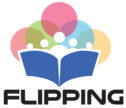Introduction
In these unprecedented times, the global pandemic has forced the education system to undergo a dramatic transformation. It has revealed the rigidity of traditional classroom-based learning and highlighted the need for innovative teaching models. One such model that has emerged as a powerful tool for educational development is flipped learning.
Flipped learning flips the traditional classroom setting on its head by combining online lectures, self-study, and research at home with interactive, hands-on activities in the classroom. This approach not only allows students to engage more deeply with the material but also encourages critical thinking, problem-solving, and collaboration.
The Benefits of Blended Learning
Blended learning models, such as flipped learning, have been proven to be more effective than solely face-to-face or solely online instruction. A 2015 meta-analysis found that blended learning leads to higher student achievement, increased engagement, and improved satisfaction with the learning process.
By leveraging technology and online resources, blended learning creates a more personalized learning experience. Students can access lectures, readings, and discussions at their own pace, allowing them to revisit materials and reinforce their understanding. This flexibility also caters to the diverse learning styles and needs of individual students.
Preparing for the Future
As we navigate an ever-changing world, the skills required for success in the labor market are also evolving. Application-based and problem-solving-based approaches are becoming increasingly important in the workforce. Flipped learning aligns with these needs, as it promotes critical thinking, collaboration, and real-world application of knowledge.
Additionally, flipped learning prepares students for a future that is likely to involve remote work and digital collaboration. By becoming proficient in online learning and virtual communication, students are better equipped to adapt to new professional environments.
Embracing Flipped Learning
Implementing flipped learning in educational institutions requires dedicated mentors who can guide students through the learning process. These mentors play a crucial role in facilitating discussions, answering questions, and providing individualized support.
Furthermore, institutions need to invest in technology and infrastructure to ensure students have access to reliable internet and devices. This investment is a worthwhile endeavor, as the long-term benefits of flipped learning are immense.
Conclusion
Flipped learning is a powerful educational model that has the potential to revolutionize traditional teaching methods. By embracing this approach, we can create more engaging and effective learning experiences for students, better preparing them for the future.
